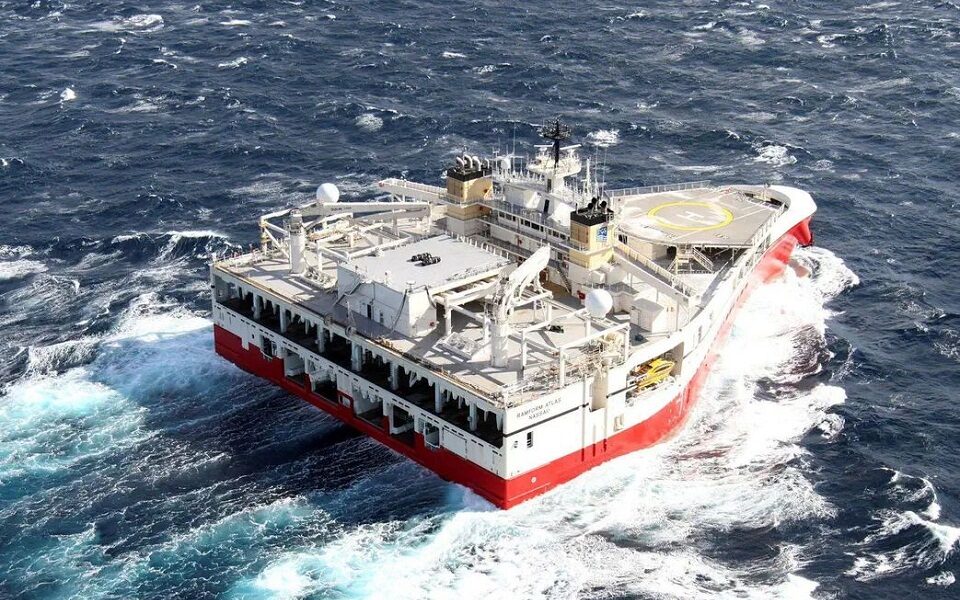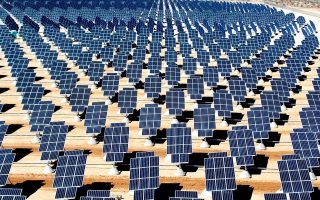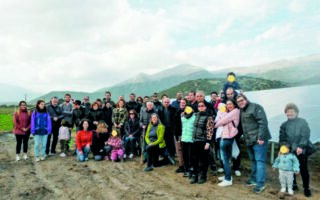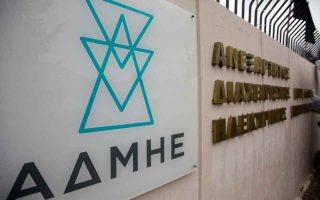Decision time for the gas reserves off Crete

Greece’s national hydrocarbon program is entering its most critical stage, that of the decision on whether to enter drilling rigs in the sea area of Crete to confirm whether indeed the indications of potential natural gas fields are capable of making the country a producer and exporter
The geologists of the world’s largest multinational, ExxonMobil, have begun the evaluation of the latest 3D data collected by PGS’ Ramform Hyperion survey vessel between February 24 and March 19 in the areas southwest and west of Crete.
Recent 3D surveys have focused on specific areas of interest and collected all the necessary data to assess potential geohazards and safely plan potential exploratory drilling.
Upon completion of data processing and analysis within the next few months, the ExxonMobil (70%) – Helleniq Energy (30%) consortium will make final decisions on whether or not to proceed with exploratory drilling, with relevant actors placing them sometime in October.
Historic
If the decisions are positive, Greece’s first ever survey drilling in a very deep water depth and at an extremely long distance from the coasts will be carried out. The targets in the two areas of Crete are located at great depths reaching 2,000 or even 3,000 meters and the cost per exploration well is between $100-150 million.
The interest of the US multinational and the continuation of the research has a special geostrategic significance for the Greek side.
ExxonMobil proceeded with 3D surveys following encouraging results from processing and evaluating data collected from 2D seismic surveys from November 2022 to February 2023. The 12-month processing and interpretation of these data confirmed targets identified in the seismic surveys it carried out in two regions of Crete in 2012 by PGS on behalf of the Hellenic Hydrocarbons and Energy Resources Management Company (HEMERA).
These data were bought a few years later by ExxonMobil, which after the discovery of the Zor deposit in Egypt in 2015 turned its interest to the Eastern Mediterranean, with the first stop being the EEZ of Cyprus. The 2D seismic data confirmed the existence of the “Talos” geological structure, as named by Helleniq Energy.
Timetable
The only way to find out if the “Talos” structure actually hides a natural gas deposit of the size of Zor is to drill it, a decision ExxonMobil will make as the manager of the leasing consortium. If the decision expected in October is positive, the first exploratory drilling will begin in the second half of 2025 and the results will determine the next moves of the consortium. According to the practice followed internationally, even in the case of a positive result, a confirmatory drilling will be needed to make an investment decision to produce the field.
A possible significant discovery in Crete will also send a positive message to the Ionian regions, where the seismographic surveys by the leasing companies (Energean and Helleniq Energy) have also been completed.
As the exploration case enters the final stretch, the ExxonMobil-Helleniq Energy consortium has intensified contacts with both HEMERA and the government.
In fact, in May, ExxonMobil executives are expected to officially inform Prime Minister Kyriakos Mitsotakis about the progress of the program so far, the findings and the areas of interest, as well as their next moves.





